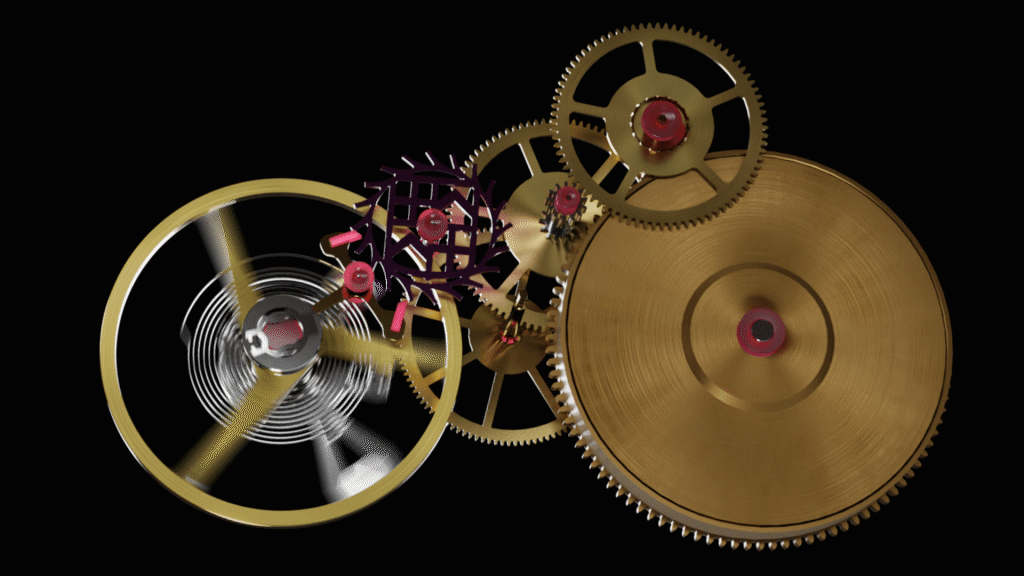Entropy, Time, and the Art of Watchmaking
Exploring the Connection Between Thermodynamics and Horology
Gather ‘round as we embark on a journey through the somewhat mysterious concept of entropy1. You might be wondering what on earth this has to do with watches, but fear not, for by the time we’ve concluded our little thought experiment, you’ll see how this fundamental principle of the universe is as intimately connected to your prized pieces as the intricate gears within them.
Before we continue, I must add: This video had a profound impact on me, and I’ve watched it several times, including twice with my 8-year-old. I plan to watch it with my other kid at some point, too. I have discussed it with several collectors at length, and it remains one of my all time favourite videos. If you’re unfamiliar with the concept of entropy, I’d suggest you start with this video and return to this post when you’re done - it might have more meaning to you this way. That said, it is not ‘required watching’ at all, so it’s entirely up to you!
Estimated reading time: ~ 20 Minutes
The Essence of Entropy
Imagine a world where everything remains pristine, where your meticulously organised watch collection never gathers dust, where the oils in your movements never degrade, and where the patina on vintage pieces never forms. Sounds boring, doesn’t it? Well, thank the cosmos for entropy - ensuring life remains a constant adventure of maintenance, restoration, and occasional despair!
Entropy, in its simplest form, is a measure of disorder. It’s the reason why the watchmaker’s bench, no matter how fastidiously you arrange it, inevitably descends into chaos by the end of a servicing session. It’s the force which transforms your pristine, box-fresh Rolex into a characterful companion bearing the scars of your shared adventures. In essence, entropy is nature’s way of charging us for the privilege of existence, a sort of universal VAT, if you will.

The concept was first brought to light by a chap named Rudolf Clausius, a German mathematician and physicist. Clausius, the weirdo, was puzzling over the behaviour of heat engines when he stumbled upon this universal truth. He noticed when energy is converted into work, there’s always a bit of wastage. This led him to coin the term ‘entropy’, derived from the Greek word for transformation.
Consider Clausius’s rather profound statement:
“The energy of the universe is constant. The entropy of the universe tends to a maximum.”
Admittedly, this is a sobering thought; The universe itself is winding down, very much like a fully-wound mechanical watch! It turns out, in this march towards disorder, we find the very essence of life, time, and indeed, the art of horology.
The Arrow of Time
Let’s get into the temporal implications of entropy. This concept provides us with one of the few pieces of evidence for the existence of time itself. The Arrow of Time, a term coined by the astronomer Arthur Eddington in 1927, points towards the future, guided by the steady increase of entropy.

Eddington put it like this:
“Let us draw an arrow arbitrarily. If as we follow the arrow we find more and more of the random element in the state of the world, then the arrow is pointing towards the future; if the random element decreases the arrow points towards the past. That is the only distinction known to physics.”
I’m sorry, but this is truly fascinating, and if you don’t agree, you might as well stop reading now. The concept which gives meaning to our watches - the forward march of time - is intrinsically linked to the increase of disorder in the universe. Every tick of a watch is basically a tiny rebellion against the cosmos, an effort to impose order on what seems to be ever-increasing chaos!
Think about a balance wheel in a mechanical watch. Its oscillations, so precise and regular, are a microcosm of our struggle against entropy. Each swing represents a small victory, a moment of order in a universe bent on disorder. Yet, inevitably, the mainspring winds down, the oils degrade, and the pivots wear.
Entropy always collects its dues.



